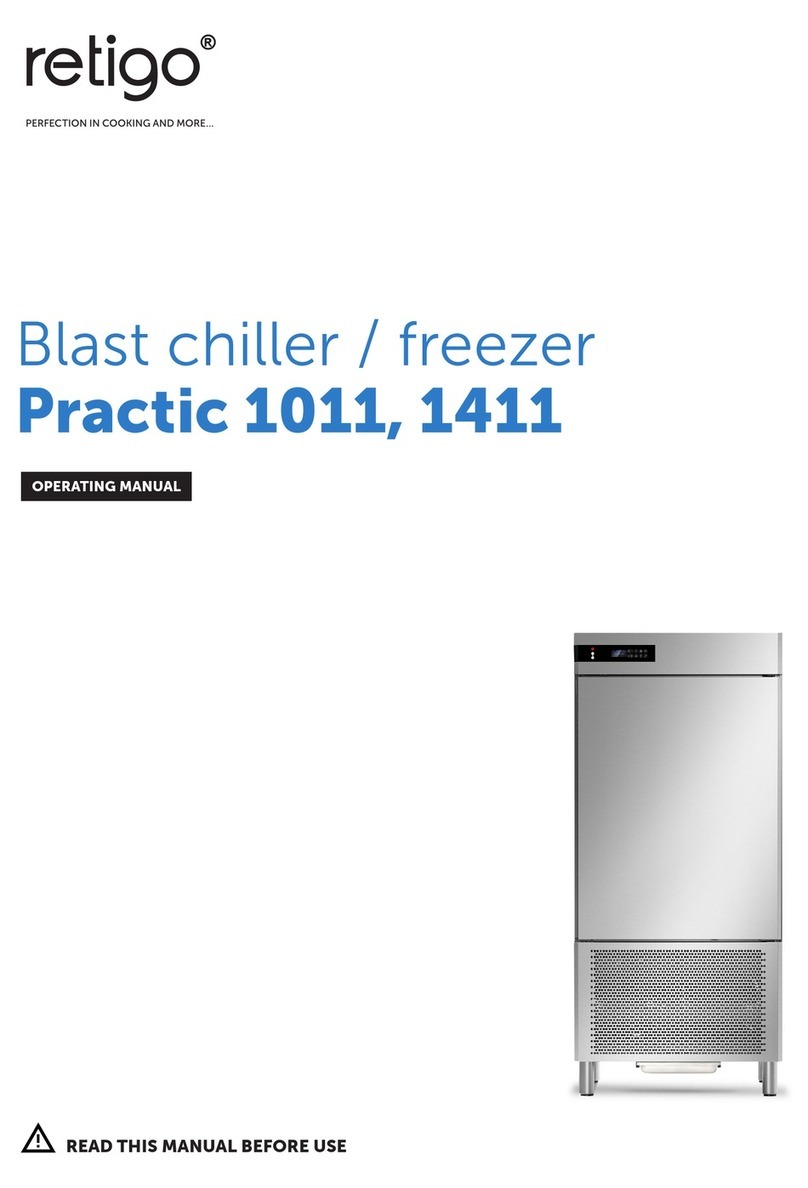
3
ENGLISH
GB
3. SAFETY
!It is recommended to carefully
read the instructions and warnings
contained in this manual before using the
appliance. The information contained in
the manual is fundamental for the safety
of use and for machine maintenance.
!Keep this manual carefully so that it can be
consulted when necessary.
The electric plant has been designed in
compliance with the IEC EN 60335-2-89
Standard.
!Maintain ventilation openings in the
appliance casing or in the built-in structure free
from all obstructions.
!Do not use mechanical devices or other
means to accelerate the defrosting process, other
than those recommended by the manufacturer.
!Do not damage the coolant circuit.
!Do not use electrical appliances inside the
appliance compartments for storage of frozen
food.
!Do not store explosives, such as pressurised
containers with flammable propellant, in this unit.
!Do not place anything on the bottom of the
device. Use the appropriate racks to store the
product.
!The maximum permissible load for the racks
is 45kg evenly distributed.
if the supply cord is damaged, it must be
replaced by the manufacturer, its service agent or
similarly qualified persons in order to avoid
hazard.
,Specific adhesives highlight the presence of
mains voltage in the proximity of areas (however
protected) with risks of an electrical nature.
!If a stationary appliance is not fitted with a
supply cord and a plug, the means for
disconnection must be incorporated in the fixed
wiring in accordance with the wiring rules.
In the design and construction phase, the
manufacturer has paid particular attention to the
aspects that can cause risks to safety and health
of persons that interact with the appliance.
Carefully read the instructions stated in the
manual and those applied directly to the machine,
and particularly respect those regarding safety.
Do not tamper with, evade, eliminate or by-pass
the installed safety devices. Failure to comply with
this requisite can lead to serious risks for personal
health and safety.
It is recommended to simulate some test
manoeuvres to identify the controls, in particular
those relative to switch-on and switch-off and their
main functions.
The appliance is only destined for the use for
which it has been designed; any other use must
be considered improper.
The manufacturer declines all liability for any
damage to objects or injury to persons owing to
improper or incorrect use.
All maintenance interventions that require
precise technical skill or particular ability must be
performed exclusively by qualified staff.
!When using the appliance, never obstruct
the air inlet when the appliance is on, so as not to
compromise its performance and safety.
!Never stretch the power cable.





























